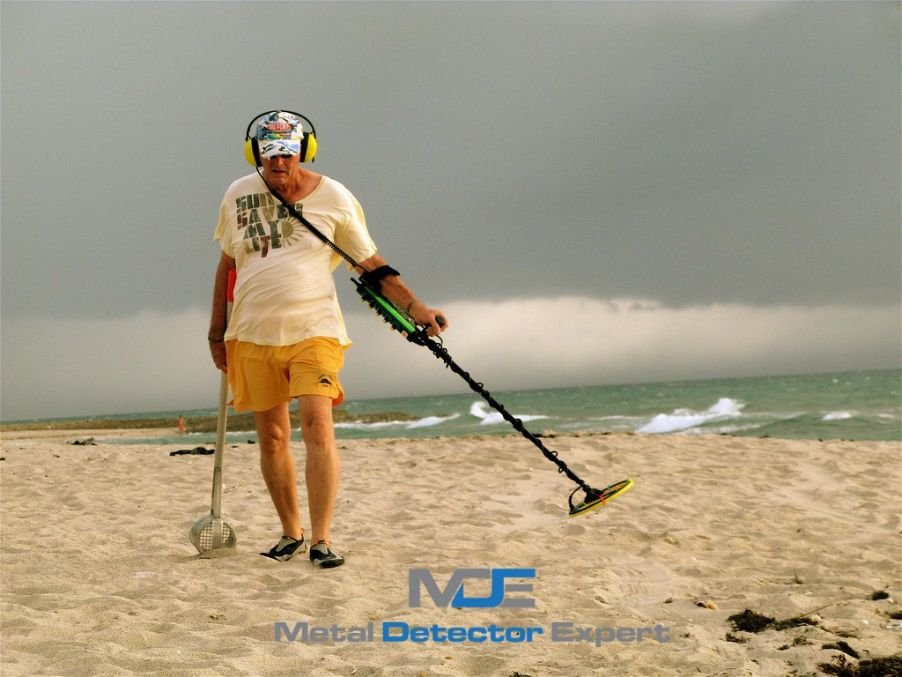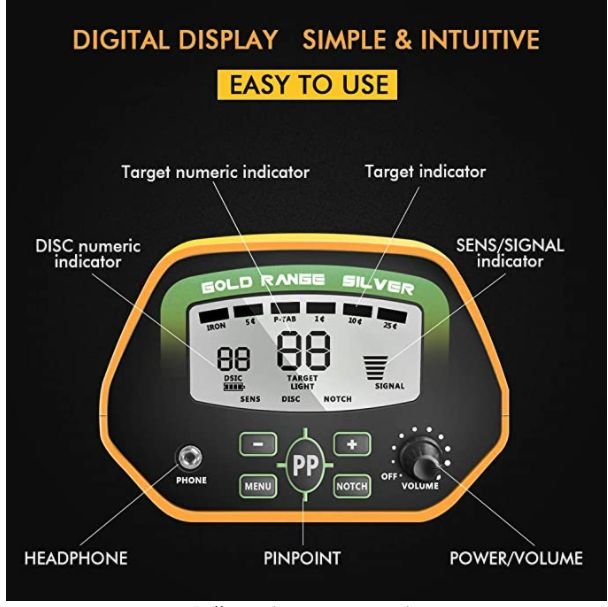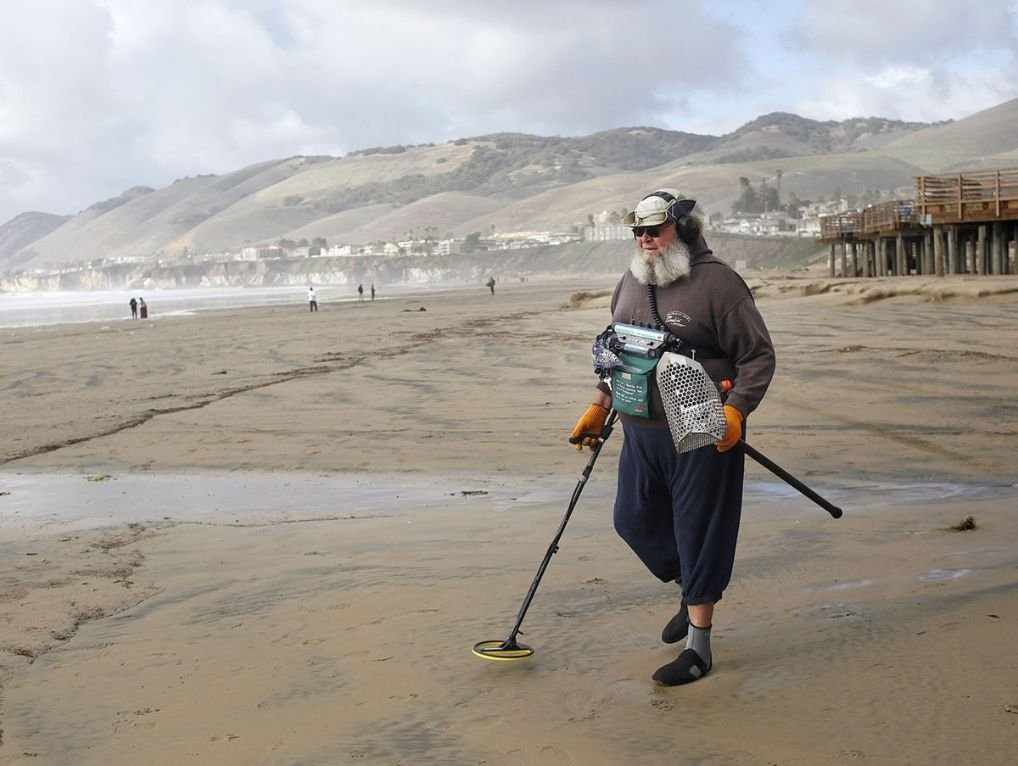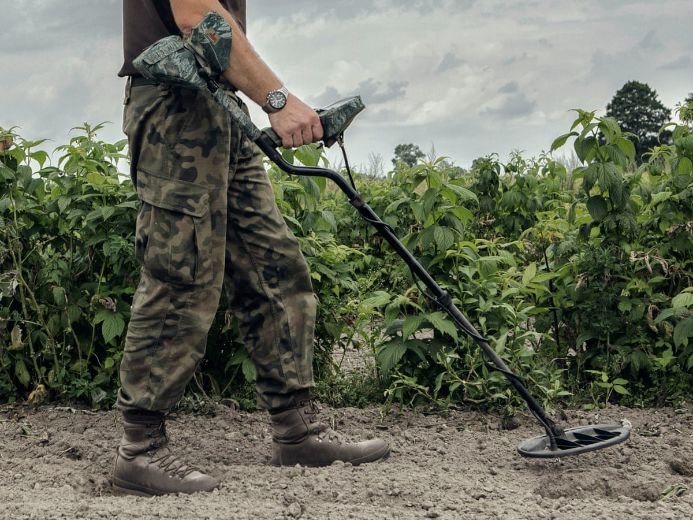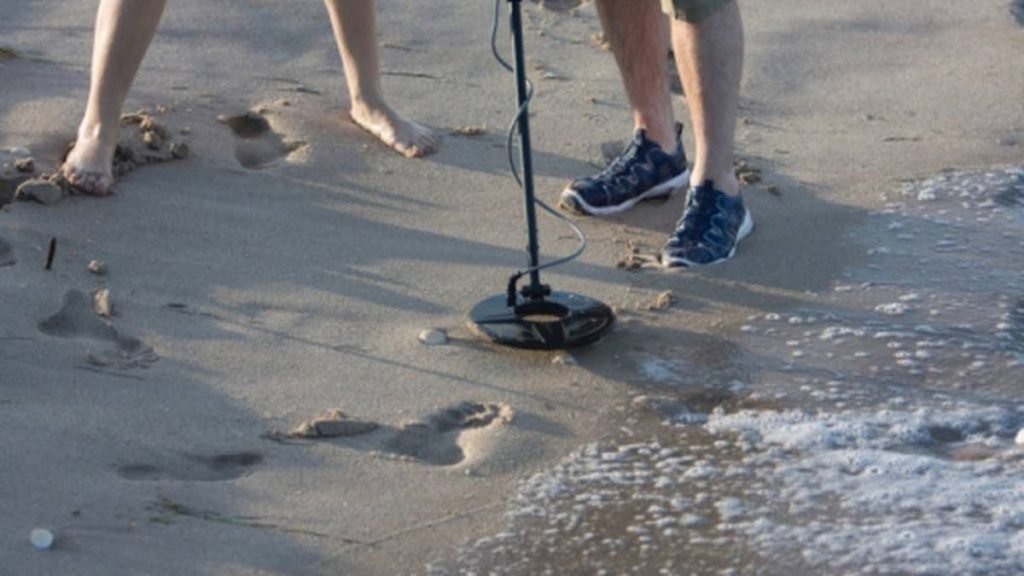Beginners Guide To Using A Metal Detector & Finding Hidden Treasure!
Have you picked up a metal detector and want to begin seeing what you can find in the great outdoors?
There isn’t anything too complicated with metal detecting. However, there are a few things you need to know so how do you use a metal detector?
It may sound like the most obvious answer but if you don’t understand your metal detector settings and features fully then you won’t get the best out of it.
Being comfortable with your metal detector is important, you’ll be able to use it efficiently and you stand a better chance of finding that all-important treasure!
Know Your Metal Detectors Settings
When you start getting to know your machine, it’s good to start with the instruction manual.
This will give you a great overview of each setting and how they can be adjusted.
Sometimes you may need a bit more information and YouTube can usually provide you with that.
Every metal detector model is different but some common settings tend to appear on most models so let’s look at those!
Detection Mode
The vast majority of detectors have this setting. You are able to change it based on what type of object you’d like to focus on. There is usually a good choice of different metals so you are able to focus on your search.
Discrimination
Obviously, there are things you may not want to discover – there is a lot of rubbish lying around after all!
If your metal detector has this setting then you are able to ignore certain metals. For example, if you didn’t want to search for iron, then you can stop your detector from alerting you to it.
Ground Balance
Depending on where you are hunting, you may find that your metal detector is alerting you to things you don’t want to be made aware of. If there is a high concentration of iron in the ground for example.
You are able to alter the settings so that the detector can ignore any traces of iron to a certain level.
Sensitivity
You may naturally be thinking that you want a sensitive detector. This isn’t always the case as if you are somewhere that has a lot of pipes then you may want to alter the sensitivity setting so as to avoid always picking these up.
Test Your Metal Detector
Before you set off to a location for the day, it’s always worth checking that your metal detector is working how you’d like it to be.
If you can, bury a selection of different metals somewhere (a sandpit works brilliantly for this).
Then test your metal detector on them, it should be able to pick up each metal.
This is a great time to play with your settings too so you can get a feel for how each setting impacts the results.
Top tip! If you’re burying jewellery, you don’t want to lose it. Tie some string (or floss) onto it so you are able to retrieve it.
Kit You’ll Need When You’re Out With A Metal Detector
First and foremost, you’ll need your metal detector but there are other pieces of kit that you should consider taking to make things easier.
Gloves – Possibly one of the most important pieces of kit you’ll need. You’ll be going through dirt and potentially picking up sharp bits of metal so a pair of durable gloves will be handy
Headphones – Not a truly essential bit of kit but nevertheless very useful. A decent pair of over-ear headphones will enable you to hear when you find a signal.
Tools for digging – Depending on where you need to dig, will depend on what tools you need.
- Beaches – Sand scoop
- Soil – Lesche digger
- General ground – small trowel
As time goes on you will find what tools work best for you. One thing I will say is, quality is worth paying for.
Where To Use A Metal Detector
So you’ve got a metal detector but where are the best places to go?
Set your sights on a location that has a lot of foot traffic, this way items will often be replenished.
Some good locations to get started are:
- Public parks
- Beaches
- Woodlands
- Churchyards
- Caravan parks
- Private land
One big, big thing to always keep in mind is that you may need to get permission. Always make sure that you are allowed to metal detect on the land.
If you are caught trespassing then you could be fined and possibly banned from the area.
Before going onto land, you should try to determine who owns it. You can then contact them and explain what you wish to do. They may or may not give you permission.
With beaches you also may need to seek permission. In the UK, you can get a permit and this can be done through the Crown Estate.
What Is a Good Location For Metal Detecting?
Choosing the right place to go hunting with your metal detector can be the difference between a successful day and an unsuccessful day.
What you should aim to do is find somewhere that hasn’t already been searched or somewhere that will be replenished. This way, there should be some treasure left for you!
One of the best locations to metal detect on is private land. If you can get permission from the owner, you will more than likely discover that it has never been hunted on before so the potential for finding rare items is great.
Places that receive a lot of foot traffic is a good place to hit. We’re talking things like playing fields, parks or fairgrounds.
It’s inevitable that people will lose items in these areas so you can find some real gems.
Beaches are often used by those wanting to find treasure so you will be competing with others. However, as a beach tends to visitors so you get a natural cycle of new items to be found.
Top tip! Try to head down to the beach after there has been a storm or a particauly busy day at the beach.
Always bare in mind that you should leave the location how you found it. This includes filling in holes you’ve created.
If you don’t you might find that you won’t be allowed back. It’s also just respectful, isn’t it?
Can You Adjust Metal Detector Settings to Avoid Being Tricked?
Yes, you can adjust metal detector settings to avoid being tricked by various trick metal detector methods. By adjusting the sensitivity, discrimination, and ground balancing settings, you can minimize false signals and improve the accuracy of your metal detector, making it harder for deceptive methods to fool you.
How To Successfully Search When Using A Metal Detector
Alright so now you’re kitted up with the right gear and you know where you’re going so let’s look at how to use you metal detector properly to get the most out of it.
You’re going to want to learn how to swing your detector properly.
To start with you should hold the head of the detector just above the ground.
It shouldn’t actually touch the ground but the idea is to get it low enough that the signal can penetrate further into the ground.
Aim to keep your detector around two feet ahead of you at all times.
Now you’ll want to sweep the metal detector in a semi-circular motion as you walk forward. What you should find is that the detector is swinging around a foot either side of you now.
It’s always important to keep your line straight, this prevents you front going over the same ground twice.
People who have been metal detecting for a while will often say “low and slow” and that’s bang on.
Once you’ve got the technique you’ll find it natural and you’ll be doing it without too much thought.
With a bit of luck, you won’t have to go far before you get your first beep.
When you do, the best thing to do is stop moving and change your technique. Stop doing a swing with your detector and move it in small circles.
As you’re doing this, you should be able to establish where the item is. Narrowing things down. To help with this, some people raise the sensitivity setting to find the location more accurately.
Now that you have it narrowed down, the next step is to make a ‘plug’. A plug is different from a hole. The ground is able to recover more quickly and won’t be destroying any grass routes which is very important!
To dig a plug you should create a horseshoe shape around the area you want to dig. There is no need to create a full circle.
You will need to ensure that you cut down at least 3 inches. This depth makes sure that the grass roots are protected.
With you tool you should now be able to flip the plug up. The part that you haven’t cut can act as a hinge.
Hopefully you will then find what you were looking for!
Top tip! Rescan the plug. Objects usually come in multiples so you are likely to find other items in the same place.
Flip the soil back over, if you dug any out then be sure to pop that back too.
Step on the plug several times to make sure it is securely back in position and then brush up the grass.
Whilst it may sound like quite a lot of step, I can assure you that you will become quicker, the more times you do it.
Now you’ve got your first item – was it a good find?
You should keep walking in a straight line. It’s important to keep to a system with your search.
When you have come to the end of the area you are searching then take 2 steps to the side and begin the search again.
This distance allows for an overlap to ensure that you don’t miss anything.
